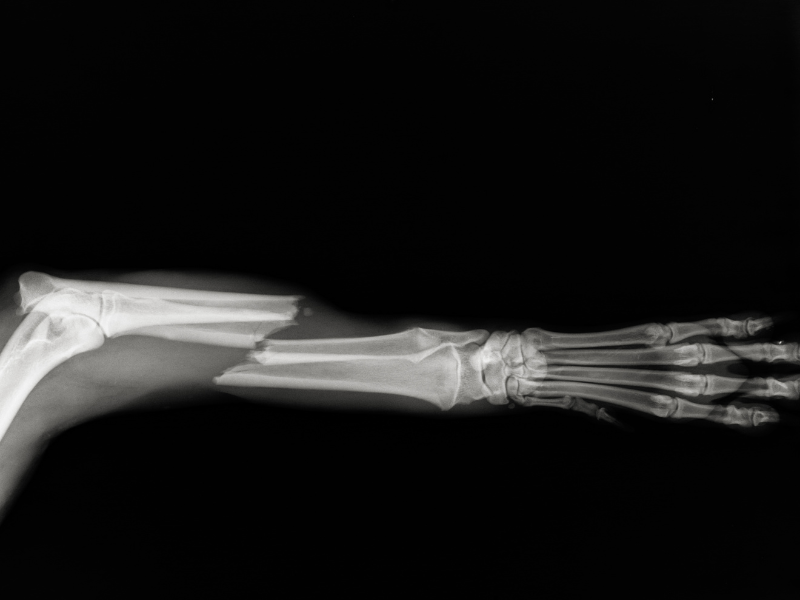Orthopedic Fractures

Find The Best Orthopedic Fracture Surgeon
Dr. Howarth, a highly skilled orthopedic surgeon, specializes in orthopedic fracture treatment, offering advanced care for patients with bone injuries. Whether it’s a simple break or a complex fracture, Dr. Howarth uses cutting-edge techniques to ensure optimal healing and recovery. His personalized approach includes a thorough assessment, precise surgical intervention if needed, and tailored rehabilitation plans to restore mobility and function. With extensive experience in treating fractures, Dr. Howarth is committed to providing comprehensive care that minimizes pain, promotes healing, and helps patients return to their daily activities as quickly and safely as possible.
About Orthopedic Fractures
Orthopedic fractures refer to broken bones that occur when the physical force exerted on the bone is stronger than the bone itself. These fractures can result from various incidents such as falls, sports injuries, car accidents, or conditions that weaken the bones like osteoporosis. The severity and type of fracture depend on the location and force applied. Orthopedic fractures can range from simple fractures, where the bone breaks but remains aligned, to complex fractures involving multiple pieces or displacements.
Types of Orthopedic Fractures
- Stable Fractures: The broken bone remains in place and aligned.
- Open (Compound) Fractures: The bone pierces through the skin, increasing the risk of infection.
- Comminuted Fractures: The bone shatters into several pieces.
- Oblique Fractures: The break has a diagonal angle.
- Transverse Fractures: The bone breaks in a horizontal line.
- Greenstick Fractures: Common in children, the bone bends and cracks but doesn’t break completely.
Symptoms of Orthopedic Fractures
- Intense pain and swelling at the site of injury
- Bruising or discoloration
- Deformity or an unnatural appearance of the affected area
- Inability to move or bear weight on the affected limb
- Sometimes, bone protrusion in open fractures
Diagnosis and Treatment
Orthopedic fractures are typically diagnosed through physical examination, imaging tests such as X-rays, CT scans, or MRI to determine the extent of the damage. Treatment varies based on the type and location of the fracture, as well as the patient’s overall health. It may include:
- Immobilization: Casting or splinting to keep the bones in position and allow healing.
- Surgery: For severe fractures, surgery may be required to realign the bones using plates, screws, or rods.
- Physical Therapy: After immobilization or surgery, therapy is crucial for regaining strength and mobility.
Recovery and Rehabilitation
The recovery time for orthopedic fractures can vary depending on factors such as age, health condition, and the type of fracture. Simple fractures may heal within a few weeks, while complex fractures can take several months. Rehabilitation is essential to restore full functionality and prevent complications like stiffness, muscle atrophy, or deformities.
Orthopedic Fracture FAQ's
An orthopedic fracture is a break or crack in a bone that can occur due to trauma, such as a fall, sports injury, or accident. It may also result from conditions like osteoporosis, which weaken bones.
Fractures are diagnosed through physical examinations and imaging tests like X-rays, CT scans, or MRI. These tests help determine the type, location, and severity of the fracture.
Common types include:
- Simple (closed): Bone breaks but does not pierce the skin.
- Compound (open): Bone breaks and pierces the skin.
- Comminuted: Bone shatters into multiple pieces.
- Greenstick: Bone bends and partially breaks (common in children).
Treatment depends on the fracture type and location. Options include:
- Casting or splinting to immobilize the bone.
- Surgery to realign and stabilize the bone with metal plates, screws, or rods.
- Physical therapy for rehabilitation after healing.
Healing time varies depending on the fracture’s severity, location, and age or health of the patient. On average, simple fractures take 6-8 weeks to heal, while complex fractures may take several months.
To promote faster healing:
- Follow your doctor’s instructions and avoid putting weight on the injured area.
- Eat a balanced diet rich in calcium and vitamin D.
- Refrain from smoking, as it can slow down the healing process.
No, not all fractures need surgery. Simple fractures often heal with casting or splinting, while severe, displaced, or open fractures may require surgical intervention for proper alignment and stabilization.
Yes, some preventive measures include:
- Wearing protective gear during sports or physical activities.
- Maintaining bone health with regular exercise and a diet high in calcium and vitamin D.
- Avoiding high-risk activities that could result in falls or accidents.
Seek immediate medical attention if you experience:
- Severe pain, swelling, or deformity.
- Inability to move or bear weight on the affected area.
- An open wound with exposed bone (compound fracture).
Physical therapy is often recommended to restore strength, mobility, and flexibility after a fracture. It can help ensure a full recovery and reduce the risk of future injuries.
Ready to Get a Orthopedic Consultation?
Simply give us a call and book an appointment for yourself. We are here to help.